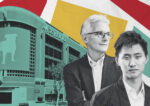After four years of a growing number of offices across San Francisco available for sublease, the inventory is on the decline.
The quantity of offices available for sublease in the city is expected to drop to 7.8 million square feet by the end of the second quarter, down from 8 million square feet in the prior period, the San Francisco Business Times reported, citing preliminary figures from Cushman & Wakefield.
The expected decline marks the first time since late 2021 that San Francisco’s inventory of office sublease space has not grown from one quarter to the next.
Robert Sammons, senior director of research at Cushman & Wakefield, attributed the decline to small chunks of sublease space converting to direct available leases.
He also said the market has produced a surge of subleases, with the fast-growing artificial intelligence sector becoming “the poster child” for sublease deals in San Francisco.
“We’re seeing a lot of startups still wanting shorter terms,” Sammons told the Business Journal in reference to the appeal of sublease space. “AI companies are specifically looking for not one to two years, but three to four years, because they’re not sure how big they’re going to be.”
A couple of big sublease deals this quarter can be attributed to most of the sublease absorption.
In March, fintech company Adyen, based in the Netherlands, signed a long-term sublease for 150,000 square feet of offices at at 505 Brannan Street, The Real Deal reported. The primary tenant is Pinterest. Financial terms of the sublease, which ends in 2032, were not disclosed.
Late last month, Scale AI subleased 180,000 square feet from Airbnb at 650 Townsend Street, which had been on the market for two years.
Smaller deals included Zendesk subleasing 40,000 square feet at 181 Fremont Street from Meta and Capital One’s new lease at 100 California Street, which included 20,000 square feet of subleased offices from cleantech firm Stem, according to the Business Times.
The recent subleases suggest tenants in San Francisco want flexibility, something they’re more likely to find through subleases than direct leases, Roman Adler, a locally based executive with Newmark, noted.
He said it also suggests growing momentum around demand for new offices in San Francisco, now 36.6 percent vacant after a broad shift to remote work.
Blocks of sublease space are absorbed by the market not because of momentary shifts in master tenants’ thinking, Adler said, but because new tenants are willing to pay for them.
— Dana Bartholomew
Read more



